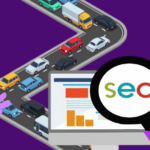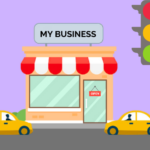Marketing is changing at a breakneck pace. We’re moving away from mass-market, “push” marketing and toward a more individualised, 1:1 connection with customers via the various channels and devices they use. Print media, television commercials, batch and blast SMS campaigns’ effectiveness and ROAS (return on ad spend) are all on the slide.
Unfortunately, when it comes to omnichannel, multi-device marketing, consumers today are way ahead of most marketers.
Over the last few years, omnichannel marketing has become a hot issue in marketing and eCommerce circles. While it appears that everyone has their interpretation of what the term means, many people confuse it with other meanings.
Fortunately, we now have a complete explanation of what omnichannel marketing is, as well as some statistics on how it works in eCommerce and some helpful advice for getting started.
What is Omnichannel Marketing?
Before we define omnichannel marketing, step one is grasping the meaning of omnichannel.
It’s the technique of serving customers and prospects through a variety of channels, which is sometimes called omnichannel. Omnichannel makes it possible to conduct business in a variety of ways, including |
- Both in-person and online point-of-sale transactions
- Customer support through digital channels, such as live chat or email, phone and face to face
Whatever the interaction or channel, the experience should be consistent and relevant to the individual.
Thus, an omnichannel marketing strategy ensures seamless messaging across channels. Each channel works together—and we stress “works together”—to create a unified message and voice for your brand. An omnichannel marketing approach, for example, would prohibit sending an SMS message about a product to someone who had just purchased it.
The premise of omnichannel is that underlying data is updated automatically, causing your messaging across all channels to adjust as well. From the first to the last touchpoint, it creates a seamless purchasing experience.
Why is Omnichannel Marketing Important?
Omnichannel marketing is critical because it enables you to provide a pleasant customer experience at every step of your lifecycle, reduce churn, and drive and maintain a favourable brand reputation. Let’s take a look at an example. Consider this scenario: you’ve had a long day at work and want to grab a cup of coffee before heading home. You know your favourite coffee shop will be packed in the evening, but you don’t have the energy to wait in line.
Wouldn’t it be great if the coffee shop had an app that allowed you to pre-purchase coffee so you could go in, pick up your order, and leave? That is just what Starbucks has done. It has simplified the customer’s ordering and payment processes. Their mobile payments account for 29% of their total transactions. Starbucks was not merely able to increase the consumer experience but could also boost its revenue with omnichannel technology.
How to create a perfect omnichannel experience?
To build the ideal omnichannel experience, start with a thorough understanding of your customer (probably more than their best friend). Starbucks, for example, recognised the customer’s pain point, namely, their inability to line even if compelled to grab a cup of coffee, and leveraged it to develop an efficient omnichannel experience.
Understanding your clients on a deeper level involves paying attention to the platforms they use to shop, their purchase habits, the issues they confront when shopping, how they connect with the brand at each touchpoint, and the devices they use to shop. This information will assist you in identifying the appropriate touch points and focusing on strengthening and linking them in order to provide a seamless and customised experience for your clients. It will also assist you in identifying typical client difficulties and developing a feasible solution for them.
How to Build a Perfect Omnichannel Marketing Strategy?
Consider how Disney developed a flawless omnichannel marketing approach to enhance visitors’ experiences at their theme parks. Disney has made it easier for tourists to schedule their accommodation, check ride timings, book tickets, and more without having to wait in a large line thanks to its website, mobile applications, and Magicbands and cards. To develop such an omnichannel experience, you’ll require a well-thought-out omnichannel marketing plan.
Here’s what you can do |
Plan the experience of the customer | Create a clear plan for how you want the experience to flow across all touchpoints by understanding their channels and their behaviour across all channels.
Use data as a base while strategizing | You will know how your customer behaves and may design a solution to address their difficulties using CRM data, social listening data, and customers’ internet search behaviour. By utilising data effectively, you may even reduce the churn.
Segment the users and personalize the journey | You may easily classify users into multiple categories based on common behaviour patterns once you’ve analysed the data. This will assist you in creating unique journeys for each consumer type.
Get the context right | The context is the most important aspect of an omnichannel marketing approach. Your users will be discouraged from engaging with you if you send the wrong message to the wrong audience at the wrong time. Make sure your message’s context is relevant to the user, and deliver it to them at the time when they are most engaged and on the channel where they engage the most.
Select the right marketing automation tools | Use the right marketing tools to implement your strategy right from the time of conceptualization to implementation. Do a thorough analysis before selecting the right one.
Make your organization customer-centric | This is an important step. Because unless your employees are not trained to offer a consistent experience to the customers, no amount of strategy or marketing tool will help.
Now that you know what omnichannel marketing is and how to construct an effective strategy, you can go on to the next step. Let’s take a closer look at how you might put it into practice in your company.
Omnichannel vs. Multichannel
Marketers frequently swap terminology like omnichannel, multichannel, and cross-channel. After all, they appear to mean the same thing: acquiring, engaging, and retaining customers through different channels. Well, while the essence of all the three is the same, there is a thin line that differentiates them. In multichannel marketing, all communication channels operate independently of one another, with no connection between them, but in cross-channel marketing, only a few communication channels are linked.
Omnichannel marketing is much more mature as all the channels work cohesively and in harmony with each other. But how do you determine which one of them is perfect for you? Let’s look at the difference between omnichannel and multichannel marketing.
Multichannel marketing |
- The brand is at the centre of your marketing strategy
- Primarily static communication, with messages that are relatively the same, sent across several channels
- Channels don’t update and personalize to suit your customers’ needs
- Channels operate independently
Omnichannel marketing |
- The customer is at the centre of your marketing strategy
- The message changes and adapts to how the customer has interacted with your brand
- The customer’s behaviour prompts updates to each channel
- Channels work together
Important Differences Between Multichannel & Omnichannel Marketing
Multi- and omnichannel approaches differ in that omnichannel marketing puts the customer at the core to ensure a completely consistent, unified experience at every touchpoint as opposed to simply enabling that touchpoint. You can think of it this way, too: multichannel means many, omnichannel means all (the customer is literally at the centre).
To better explain the uniqueness of multichannel and omnichannel marketing strategies, we can hone in on four key differences.
1. Channel vs. Customer
The multichannel approach simply tries to spread the word across as many channels as feasible. Multichannel marketing entails casting the largest net possible in order to obtain the most client engagements; the more, the better. Companies that use a multichannel strategy contact with customers across two or more channels, the most common of which is social media and email.
The omnichannel approach, on the other hand, connects every channel to engage with customers as a whole, ensuring that they have a positive overall experience with the business across all channels. The goal is to strengthen the connection between consumers and the brand.
Compared to enterprises without omnichannel programmes, companies with well-defined omnichannel customer experience strategies earn a 91 percent higher year-over-year gain in customer retention rate.
2. Consistency vs. Engagement
The second significant distinction between the strategies is consistency, which is brought about by omnichannel’s focus on the customer’s experience. Omnichannel firms work hard to ensure that their customers have the same experience and receive the same message across all channels.
A heightened sense of familiarity and engagement with the brand is ensured by a consistent brand image and message. Marketers who are executing an omnichannel marketing strategy must ensure that all internal departments are on board and message. To guarantee that the plan is implemented successfully, the PR, customer success, social media, and sales teams, for example, must all present this unified message.
3. Effort vs. Effortless
Understanding ways to minimise effort from the consumer experience is another aim of multichannel marketing. Many people mistakenly believe that the numerous channels available to engage with customers nowadays are just more options to choose from. That’s a more multichannel strategy. Using data to determine where effort occurs in the consumer experience and how to reduce rather than add effort is what omnichannel is all about. Consumers should be able to buy with ease thanks to omnichannel marketing.
Benefits of Omnichannel Marketing
There are no cons to multi-channel or omnichannel marketing, per se. The perception across the industry is generally that “omnichannel” is that north star — the top of the mountain. While having and enabling multiple channels certainly isn’t bad, connecting them should be the goal.
A successful omnichannel marketing strategy can help your organization realize the following benefits:
Boost Customer Loyalty
Customers buy from companies in which they have faith and respect. The purpose of omnichannel marketing is to provide a consistent experience across all platforms while also giving each audience member a unique experience. By optimising the entire customer experience, this type of strategy increases client loyalty and retention. Marketers who used omnichannel marketing had a 90 percent greater retention rate than those who only used one channel.
Improve Brand Recall
In omnichannel marketing, the emphasis on cross-channel consistency ensures that your customers view your brand consistently across platforms and devices. This consistency aids in the recall of your brand by your customers. Your customer base’s likelihood of making a purchase will be boosted if they have a strong sense of brand memory.
Realize Increases in Revenue
Customer loyalty, brand recall, and repeat purchases are all improved by the omnichannel strategy. Through content personalisation and word-of-mouth marketing, these efforts help firms retain and attract new customers. More customers equal more business and, consequently, more revenue.
How to Boost Your ROI With Omnichannel Marketing?
You must demonstrate to your management how omnichannel marketing can increase the company’s ROI in order to provide a best-in-class experience for your customers. To assist you, we’ve compiled a list of four techniques to increase ROI while also providing a great client experience. |
Consistent messaging | Ensure that your messaging is consistent throughout the customer lifecycle, from training your marketing, sales, and customer service teams to tailoring content at each stage.
Consistent experience | If you want to increase client lifetime value (LTV), you should concentrate on providing a seamless experience across all touchpoints. Ensure that your personnel is well-trained to give such an experience, as different customers will connect with your business in different ways, and there is no one-size-fits-all approach.
Continuity in communication | Ensure that there is continuity in communication across all the channels, so people are guided throughout the buyer’s journey.
Data-driven marketing | Personalization is the key to successful marketing. Use data-driven marketing to understand your customers, so you can engage with them in the right way by using the right channels.
Summing-up
You’ll be able to give a more unified experience to your valued customers if you implement omnichannel marketing. These efforts not only resulted in a more seamless user experience, but also increased customer loyalty, sales, and brand visibility. To boost client retention and revenue, you must shift your focus to omnichannel activities.
To establish a successful omnichannel marketing campaign, your team may need to combine their marketing and technological expertise and sift through a massive amount of data. But, in the end, it’ll all be for the same purpose: to assist you to create a pleasant client experience. What more do you need than a satisfied customer who will return to you again and again?
Shergroup is committed to helping you create effective omnichannel marketing strategies that can enhance your customer’s experience and grow your business. You can reach out to our expert team to learn about how to win the omnichannel marketing game for your business.
Contact us on
You can reach us |
By Phone | 020 3588 4240
Website | www.shergroup.com and you can chat to us from here
Email | [email protected]
Facebook | Check out Shergroup on this channel and message us
Twitter | Check out ShergroupChat on this channel and message us
LINKEDIN | Check out Shergroup’s LINKEDIN – and please FOLLOW us!
Instagram | Check out ShergroupChatter and follow us!






